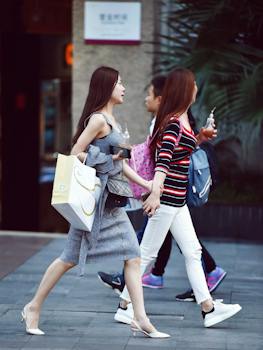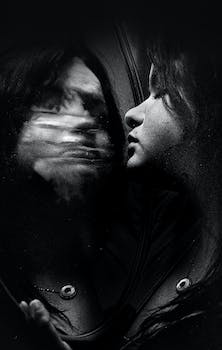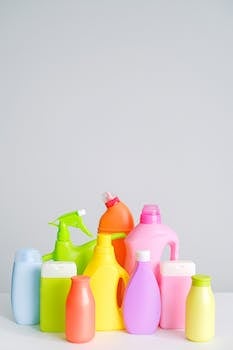

-
Table of Contents
"Unveiling the Diverse Dimensions of Beauty in China"
Introduction
Introduction:
Exploring Beauty Standards in China
Beauty standards vary across different cultures and societies, often reflecting the unique values and ideals of a particular region. China, with its rich history and diverse population, has its own set of beauty standards that have evolved over time. From ancient traditions to modern influences, this article aims to delve into the fascinating world of beauty standards in China. By examining the historical context, societal expectations, and contemporary trends, we can gain a deeper understanding of the beauty ideals that shape the lives of many in this vibrant nation.
The Evolution of Beauty Standards in China
The Evolution of Beauty Standards in China
Beauty standards have always been a topic of fascination and debate in societies around the world. China, with its rich history and diverse culture, is no exception. Over the centuries, beauty standards in China have evolved significantly, reflecting the changing values and ideals of the society.
In ancient China, beauty was often associated with traditional Confucian values. Women were expected to be modest, obedient, and virtuous. Pale skin was considered a sign of beauty, as it indicated that a woman did not have to work outdoors. To achieve this ideal, women would use various methods, such as applying white powder or wearing wide-brimmed hats to shield themselves from the sun.
During the Tang Dynasty (618-907 AD), a new standard of beauty emerged. Known as the "plump beauty," women were admired for their curvaceous figures and round faces. This ideal was influenced by the influx of Central Asian cultures, which valued fuller figures. Women would consume high-calorie diets and engage in physical activities, such as horseback riding, to achieve this desired look.
The Song Dynasty (960-1279 AD) brought about a shift in beauty standards. The ideal woman during this period was known as the "willow waist beauty." Women were expected to have slender figures with narrow waists, emphasizing grace and elegance. Foot binding, a practice that involved tightly binding the feet to prevent growth, became popular during this time as it was believed to enhance a woman's beauty and femininity.
The Ming Dynasty (1368-1644 AD) saw a return to the preference for pale skin. Women would use various skincare products, such as rice powder and herbal remedies, to maintain a fair complexion. Additionally, small feet were still considered desirable, and foot binding continued to be practiced by some.
In the 20th century, China underwent significant political and social changes that influenced beauty standards. During the early years of the Communist regime, beauty was often associated with hard work and revolutionary spirit. Women were encouraged to have short hair and wear simple, practical clothing. The emphasis was on inner beauty and dedication to the collective rather than physical appearance.
However, with the economic reforms of the late 20th century, China experienced rapid modernization and globalization. Western ideals of beauty began to influence Chinese society. Tall, slim figures and Western facial features became increasingly desirable. The rise of the entertainment industry and the popularity of beauty pageants further reinforced these standards.
In recent years, there has been a growing movement in China to challenge traditional beauty standards and promote body positivity. Influencers and celebrities have been using social media platforms to advocate for diverse representations of beauty. This shift reflects a broader global trend towards inclusivity and acceptance of different body types and appearances.
In conclusion, beauty standards in China have evolved significantly over the centuries, reflecting the changing values and influences of the society. From the emphasis on pale skin and small feet in ancient times to the influence of Western ideals in modern times, beauty standards continue to shape perceptions of attractiveness. However, there is also a growing movement towards challenging these standards and embracing diversity. As China continues to evolve, so too will its beauty standards, reflecting the ever-changing ideals of its society.
The Impact of Social Media on Beauty Standards in China

The Impact of Social Media on Beauty Standards in China
In recent years, social media has become an integral part of our lives, shaping our perceptions and influencing our behaviors. This is particularly true when it comes to beauty standards, as platforms like Weibo and Douyin have revolutionized the way people in China perceive and pursue beauty. The impact of social media on beauty standards in China cannot be underestimated, as it has both positive and negative consequences.
One of the positive aspects of social media's influence on beauty standards in China is the democratization of beauty. In the past, beauty standards were largely dictated by traditional media outlets, such as television and magazines. However, social media has given ordinary people a platform to showcase their own unique beauty, challenging the narrow definitions set by the mainstream media. This has led to a more inclusive and diverse perception of beauty, with individuals of all shapes, sizes, and ethnicities being celebrated for their unique features.
Moreover, social media has also provided a space for marginalized groups to redefine beauty standards in China. For example, the body positivity movement has gained traction on platforms like Weibo, with influencers and everyday users promoting self-acceptance and challenging societal norms. This has had a profound impact on individuals who have long felt excluded or judged based on their appearance, allowing them to embrace their bodies and feel confident in their own skin.
However, the influence of social media on beauty standards in China is not without its drawbacks. One of the negative consequences is the perpetuation of unrealistic beauty ideals. With the rise of photo editing apps and filters, it has become increasingly easy for individuals to alter their appearance and present an idealized version of themselves online. This has created a culture of comparison and self-doubt, as people strive to attain unattainable standards of beauty.
Furthermore, social media has also given rise to a phenomenon known as "wanghong," or internet celebrities, who often set unrealistic beauty standards. These influencers, who have amassed large followings on platforms like Douyin, often promote products and services that promise to enhance one's appearance. This has led to a consumer culture where individuals feel pressured to invest in beauty treatments and products in order to meet these standards, often at great expense.
In conclusion, social media has had a profound impact on beauty standards in China. While it has allowed for a more inclusive and diverse perception of beauty, it has also perpetuated unrealistic ideals and created a culture of comparison. It is important for individuals to be critical consumers of social media content and to remember that beauty comes in all shapes, sizes, and forms. By promoting self-acceptance and embracing diversity, we can challenge the narrow beauty standards perpetuated by social media and create a more inclusive society.
Cultural Influences on Beauty Standards in China
Cultural Influences on Beauty Standards in China
Beauty standards vary across different cultures, and China is no exception. The concept of beauty in China has been shaped by a multitude of cultural influences throughout history. From ancient traditions to modern media, these influences have played a significant role in defining what is considered beautiful in Chinese society.
One of the most prominent cultural influences on beauty standards in China is Confucianism. Confucianism, an ancient philosophy that emphasizes social harmony and filial piety, has greatly influenced the perception of beauty in Chinese culture. According to Confucian teachings, a woman's beauty is closely tied to her virtue and moral character. Traditional Chinese beauty standards prioritize qualities such as modesty, gracefulness, and loyalty. These values are reflected in the idealized image of a Chinese woman, who is often depicted as gentle, demure, and obedient.
Another cultural influence on beauty standards in China is the concept of yin and yang. Yin and yang, a fundamental concept in Chinese philosophy, represents the balance between opposing forces. In terms of beauty, yin and yang are believed to be embodied in the contrast between delicate femininity and strong masculinity. Traditional Chinese beauty standards emphasize the importance of a harmonious balance between these two qualities. Women are expected to possess delicate features, such as fair skin, small feet, and a slender figure, while men are admired for their strength and masculinity.
In addition to ancient cultural influences, modern media has also played a significant role in shaping beauty standards in China. With the rise of social media and globalization, Western beauty ideals have become increasingly popular among Chinese youth. Western features, such as a tall nose bridge, double eyelids, and a slim figure, are now often seen as desirable in Chinese society. This shift in beauty standards can be attributed to the influence of Western media, which promotes a more diverse and globalized concept of beauty.
However, it is important to note that beauty standards in China are not monolithic and vary across different regions and ethnic groups. China is a vast country with diverse cultures and ethnicities, each with its own unique beauty standards. For example, in some ethnic minority groups, such as the Uighurs and Tibetans, traditional beauty standards prioritize different features, such as darker skin and fuller figures.
Furthermore, beauty standards in China are not solely based on physical appearance. Traditional Chinese beauty ideals also emphasize inner qualities, such as intelligence, kindness, and talent. This emphasis on inner beauty is reflected in the Chinese proverb, "A beautiful face may fade, but a good heart will always remain." This cultural value highlights the importance of character and virtue in defining true beauty.
In conclusion, beauty standards in China are influenced by a combination of cultural factors, including Confucianism, the concept of yin and yang, and modern media. While traditional Chinese beauty standards prioritize qualities such as modesty and gracefulness, Western beauty ideals have also gained popularity in recent years. It is important to recognize that beauty standards in China are diverse and vary across different regions and ethnic groups. Ultimately, beauty in Chinese culture is not solely based on physical appearance but also encompasses inner qualities and virtues.
Q&A
1. What are some traditional beauty standards in China?
Traditional beauty standards in China often prioritize pale skin, as it is associated with wealth and social status. Additionally, small and delicate facial features, such as a slim nose and almond-shaped eyes, are considered desirable.
2. How have beauty standards in China evolved over time?
In recent years, beauty standards in China have shifted towards a more Westernized ideal, influenced by global media and popular culture. This includes a preference for a slim figure, double eyelids, and a more prominent nose bridge.
3. Are there any current movements challenging beauty standards in China?
Yes, there are growing movements in China challenging traditional beauty standards. Some individuals and organizations are advocating for body positivity, embracing diverse appearances, and promoting self-acceptance. These movements aim to challenge the narrow definition of beauty and encourage inclusivity.
Conclusion
In conclusion, exploring beauty standards in China reveals a complex and evolving landscape. Traditional ideals of pale skin, slim figures, and delicate features still hold influence, but there is also a growing acceptance and celebration of diverse beauty. The rise of social media and globalization has brought about a shift towards more Westernized standards, with an emphasis on youthfulness and certain physical attributes. However, it is important to recognize that beauty standards are subjective and can vary among individuals and regions within China. Overall, the exploration of beauty standards in China highlights the dynamic nature of societal perceptions of beauty and the ongoing dialogue surrounding it.






